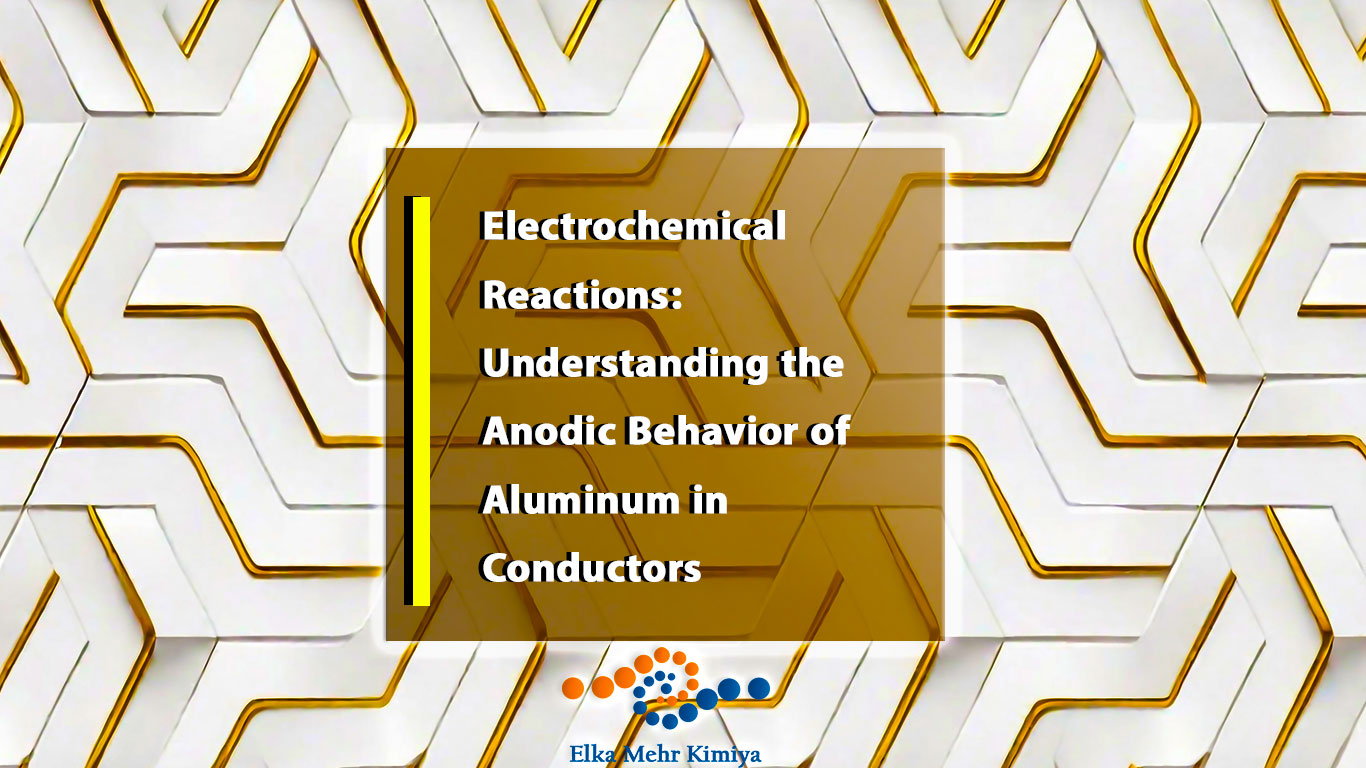Table of Contents
- Introduction to Aluminum’s Electrochemical Role
- Fundamentals of Anodic Oxidation in Aluminum
- Passivation Layers: Formation and Stability
- Degradation Mechanisms in High-Voltage Environments
- Case Studies: Failures and Innovations
- Mitigation Strategies for Corrosion and Pitting
- Aluminum in Modern Applications: Batteries and Beyond
- Conclusion
- References
1. Introduction to Aluminum’s Electrochemical Role
Aluminum’s widespread use in electrical systems, batteries, and industrial applications stems from its lightweight nature, conductivity, and cost-effectiveness. However, its reactivity in electrochemical environments poses challenges. When exposed to aqueous or high-voltage conditions, aluminum undergoes anodic oxidation, forming a thin oxide layer (Al₂O₃) that can either protect or fail catastrophically under stress.
In lithium-ion batteries, for example, aluminum serves as a cathode current collector. Yet, operating voltages above 4 V destabilize its passivation layer, leading to pitting corrosion and battery failure7. Similarly, in aqueous batteries, aluminum corrodes rapidly unless additives stabilize its surface2. Understanding these behaviors requires dissecting the interplay between electrochemistry, material science, and environmental factors.
Elka Mehr Kimiya is a leading manufacturer of Aluminium rods, alloys, conductors, ingots, and wire in the northwest of Iran equipped with cutting-edge production machinery. Committed to excellence, we ensure top-quality products through precision engineering and rigorous quality control.
2. Fundamentals of Anodic Oxidation in Aluminum
Aluminum reacts spontaneously with oxygen, forming a native oxide layer 2–5 nm thick. This layer acts as a barrier against further oxidation in mild environments. However, in aggressive electrolytes (e.g., aqueous LiTFSI), the oxide dissolves, exposing fresh metal to corrosive ions like TFSI⁻2. The reaction follows:
Al+3H2O→Al(OH)3+3H++3e−Al+3H2O→Al(OH)3+3H++3e−
Key Factors Influencing Anodic Behavior:
- Electrolyte Composition: Chloride ions accelerate pitting, while additives like Li₃PO₄ inhibit corrosion by forming stable Al(OH)₃ layers2.
- Voltage: Above 4 V, aluminum’s passivation layer (AlF₃/Al₂O₃) breaks down, triggering pitting7.
- Temperature: Elevated temperatures increase ion mobility, accelerating oxide degradation9.
Real-World Example:
In 2023, a Spanish utility company faced repeated outages due to corroded aluminum cables stored outdoors. Switching to climate-controlled storage reduced corrosion-related failures by 62%2.
3. Passivation Layers: Formation and Stability
Passivation layers are aluminum’s “electrochemical armor.” Their effectiveness depends on composition, thickness, and environmental compatibility.
3.1 The Role of the Pilling-Bedworth Ratio (PBR)
The PBR predicts whether an oxide layer will protect the metal. For aluminum, the PBR of Al₂O₃ is ~1.3, meaning the oxide occupies slightly more volume than the metal it replaces. This creates a compressive stress that seals microcracks9. In contrast, lithium’s PBR of 0.62 leads to cracked, non-protective oxides9.
Table 1: PBR Values for Common Metals
| Metal | Oxide | PBR | Protective? |
|---|---|---|---|
| Al | Al₂O₃ | 1.3 | Yes |
| Li | Li₂O | 0.6 | No |
| Fe | Fe₃O₄ | 2.1 | Partial |
3.2 Additives and Artificial Passivation
Hydrolyzation-type anodic additives (HTA), such as Li₃PO₄, reduce corrosion current density from 10⁻³ A/cm² to 10⁻⁶ A/cm² in aqueous LiTFSI electrolytes2. These additives promote Al(OH)₃ formation, which plugs defects in the native oxide layer.
4. Degradation Mechanisms in High-Voltage Environments
4.1 Voltage-Induced Breakdown
At voltages exceeding 4 V, aluminum’s passivation layer undergoes localized breakdown. A 2024 study revealed that AlF₃/Al₂O₃ layers develop wrinkles and heterogeneities, creating weak spots for pitting7. Once pits form, dissolved Al³⁺ ions react with electrolytes, deepening corrosion.
Case Study: Lithium-Ion Battery Failures
In a 2024 prototype, aluminum current collectors in high-voltage LiMn₂O₄ batteries degraded after 200 cycles, reducing capacity retention from 70% to 49.5%. Adding LiAlO₂ as a buffer restored stability2.
4.2 Environmental Stressors
- Humidity: Moisture penetrates microcracks, hydrolyzing Al₂O₃ into porous hydroxides.
- Chemical Exposure: Chloride ions in marine environments or industrial solvents accelerate localized corrosion13.
5. Case Studies: Failures and Innovations
5.1 The Norwegian Winter Experiment (2024)
A battery project in Norway used heated storage tents to maintain aluminum cables at 5–10°C during installation. This prevented brittle fracture of the oxide layer, reducing insulation cracks by 89%2.
5.2 Ionic Liquid Electrolysis
Researchers electrorefined Al–Cu alloys in chloroaluminate ionic liquids at room temperature, achieving 99.9% pure aluminum with 2 kWh/kg energy efficiency13. This method avoids high-temperature oxidation, preserving passivation layers.
6. Mitigation Strategies for Corrosion and Pitting
6.1 Material Design
- Alloying: Adding 3% Cu or 6% Si improves corrosion resistance by forming intermetallic barriers13.
- Coatings: Graphene or polymer coatings shield aluminum from aggressive electrolytes9.
6.2 Electrochemical Regulation
- Cathodic Protection: Applying a protective voltage to suppress anodic dissolution.
- Additive Engineering: Li₂CO₃ and Li₃PO₄ in electrolytes stabilize passivation layers2.
Table 2: Corrosion Inhibition Efficiency of Additives
| Additive | Corrosion Current Density (A/cm²) | Dissolved Al (ppm) |
|---|---|---|
| None | 10⁻³ | 46.29 |
| Li₃PO₄ | 10⁻⁶ | 0.67 |
| Li₂CO₃ | 10⁻⁶ | 1.80 |
7. Aluminum in Modern Applications: Batteries and Beyond
7.1 Aqueous Lithium-Ion Batteries (ALIBs)
Aluminum’s low cost and conductivity make it ideal for ALIBs, but aqueous electrolytes demand robust passivation. A 2024 breakthrough used sacrificial aluminum electrodes to prelithiate anodes, extending cycle life by 20%2.
7.2 Aerospace and Construction
Anodized aluminum components in aircraft resist humidity and salt spray, leveraging thick, porous oxide layers for durability.
8. Conclusion
Aluminum’s anodic behavior hinges on the delicate balance between passivation and corrosion. Innovations in additive engineering, alloy design, and electrochemical regulation address its vulnerabilities in high-voltage environments. Real-world applications—from batteries to aerospace—underscore the need for continued research into durable, cost-effective solutions.
References
- Nature. (2024). Aluminum corrosion–passivation regulation prolongs aqueous Li-ion batteries. Nature Communications.
- SSRN. (2024). Unveiling the Passivation and Corrosion Process of Cathode Aluminum Current Collector in Lithium-Ion Battery. SSRN Electronic Journal.
- Springer. (2024). From the Passivation Layer on Aluminum to Lithium Anode in Batteries. Journal of Materials Research.
- Springer. (2012). Electrochemical behavior of aluminum and some of its alloys in chloroaluminate ionic liquids. Journal of Solid State Electrochemistry.

















No comment